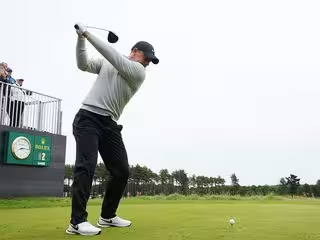What would the complete golfer look like? If you could combine Rory McIlroy’s driving, Justin Thomas’ wedge play, Matt Fitzpatrick’s scrambling skills and Cameron Smith’s putting, you’d have quite the player.
These Major winners don’t have many weaknesses – certainly not huge ones – but, as the stats show, they often excel in a particular area of the game. We asked Golf Monthly Top 50 Coach Norman Marshall to analyse six of the world’s top players and decipher what is it about their technique that helps to make them so successful.
More importantly, what can you learn from them and then take to the practice range to improve your own game? With these tee-to-green tips, there’s no reason why you can’t transform your own stats, whether that’s greater length off the tee, a better up-and-down percentage, or fewer putts per round. Here’s what you can learn from the best…
1. Rory McIlroy’s Power Drive
McIlroy primed for explosive movement is a great sight. Note how his legs are flexed. Imagine someone a step above you about to drop a golf bag into your arms. Your legs would be slightly flexed, but relaxed and ready to absorb the energy. It’s the same in an athletic golf set-up.
His hands and arms hang down without too much tension. Many club golfers tense up and this interferes with coordination and speed. Tension in the grip then shortens the muscles in the forearms; it’s a power leak as it shortens the radius of the swing. McIlroy coils powerfully around the tilt of his spine.
(Image credit: Getty Images)
Try holding a club out in front of you at waist height. Rotate it so the face points skywards, then swing fast. Listen to the noise it makes as it cuts through the air. Without the intense focus and tension the ball often induces, you should be able to sense the weight of the club and be aware of the powerful coiling and uncoiling you can create.
McIlroy hits against a braced lead leg. Picture throwing a heavy object, but imagine that as do so your lead leg buckles sideways toward the target. It physically wouldn’t make sense. A straightened lead leg gives your unwinding thighs, hips and torso a resisting force to turn against. This multiplies acceleration and provides the ‘snap’ in the unwinding sequence of the downswing, with arms, wrists and hands the last parts of a chain reaction.
..
Click Here to Read the Full Original Article at Golf Monthly…
